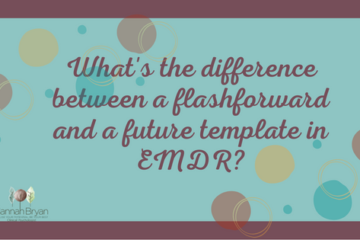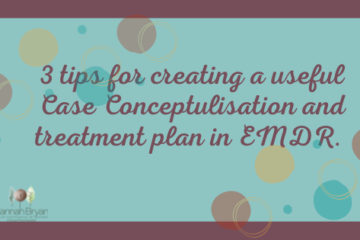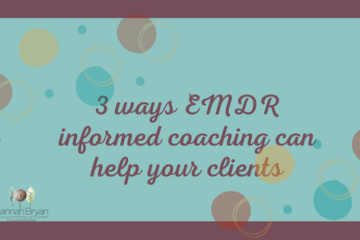The EMDR Association did an amazing job and provided what was planned as an in-person conference virtually this weekend. I honestly think they did amazing to face all those technological challenges and just get in there, they definitely took the leap. It reminded me of the leap we all had to take in working online, see my vlog about this https://youtu.be/5mSnuObo938
The main speakers were Dr Arne Hofmann and Dr Maria Lehnung talking about EMDR in their treatment of depression and Professor Ad de Jongh and Dr Suzy Matthijssen and their EMDR 2.0. As is often the case the 2 main speakers had different models and different ideas that they were advocating. What interested me was how with the presentation of depression to some it felt like nothing new, that this had all been heard before where as the EMDR 2.0 was really challenging. New challenging ideas, moments of laughing out loud, moments of cringing and moments of feeling afraid. I certainly enjoy when I am pushed out my comfort zone and try and think about things from a different perspective.
For me, where I have got stuck and often see my supervisees getting stuck is forgetting the simple things and starting off with the complex ideas. You’ll find more thoughts about that in this blog https://theemdrsupervisor.com/the-most-frequently-asked-emdr-supervision-questions-part-1/The presentation on depression was pretty much using the standard EMDR protocol. The difference was in the case conceptualisation and in the order in which the memories linked to the depression were targeted. In this model, you would start with the most recent depression episode and the memories around that but you would use the standard protocol on these memories. Many at the conference were questioning this order (we had a whats app group to use to chat through the conference, this was fantastic, very gogglebox like 😂). What was questioned a lot was why they were not going straight to the touchstone memory (a topic for a blog post one day I think). Some people found this too simple, not all that challenging. For me it made perfect sense, I was grateful that they had stuck to what I am familiar with and I was pleased to hear depression being positively treated with EMDR. I was also pleased to hear that there is some research around this model.
I’ve seen Ad de Jongh many times and I have always been challenged and inspired by his presentation style and the work that he does. I always look forward to his presentations. But what I saw on Saturday was more challenging then I have seen before! With the work that they do, the key thing we have to remember is they are working with the severe presentations, the clients with complex PTSD diagnosis that have experienced horrific events. A key block they see in SUDs not reducing is because the memory of the trauma is not activated enough. They therefore do things to activate the memory like show a virtual reality experience similar to the trauma, an audio clip with relevant noises ie. gun shots, people screaming, they even had a rubber penis that one therapist was using like we might use a wand for the eye movements! The theory was that if we really activate the memory and bring it onto the working memory we can do eye movements and other challenging things to work through the memory. They actually question the importance of bilateral stimulation, instead seeing any kind of stimulation as taxing the working memory. They are seemingly getting some pretty amazing results. Of course there is far more to their interventions than this but this was the shock factor for me anyway!
So I have come away with a happy balance of thinking how important it is to work in a structured way. I will start off as the standard training taught me but if that is not working, I have many more knowledge and skills in my tool box that might help and the more I can fill this up, the better.



0 Comments